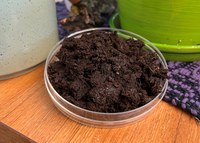Dakota Gardener: For peat moss sake
(Click an image below to view a high-resolution image that can be downloaded)
By Carrie Knutson, horticulture agent
NDSU Extension – Grand Forks
Peat moss is a gardener’s go-to product for fixing almost any soil issue. Growing plants in a container? Use a peat-base, soil-less mix. Need to loosen-up your soil? Add peat moss. Want more water holding capacity? Add peat moss. You get the idea. Gardeners, do you ever take a moment to wonder where this miracle product comes from?
Peat moss is appropriately named, as it is decomposed moss. Peat moss forms in wet, low-lying areas such as bogs and wetlands. These peat wetlands are found in cool climates. Main peat-producing areas are located in Russia and Canada.
Because of the wet conditions, the peat wetlands lack oxygen. Oxygen and warm temperatures are needed for fast decomposition. Therefore, the cool conditions and low oxygen levels slow the decomposition of plant residues, so it accumulates over hundreds or even thousands of years.
The peat moss gardeners use is typically made from Sphagnum moss species, but other mosses, and even grasses and reeds can form peats. Although, grass and reed peats have a lower quality that makes the peat undesirable for horticultural use.
Side note, peat moss is not the same as Sphagnum moss. Dried Sphagnum moss is long strings of moss that are used to decorate potted plants and silk flower arrangements.
Peat moss is used in containers and as a soil amendment because of its water holding capacity, and at the same time, it promotes water drainage, balancing the amount of air and water in the root zone. As I mentioned, it is the main ingredient in many soil-less potting mixes, and it is used as a soil amendment.
The sustainability of peat harvesting and the impacts of removing peat are hot topics. Peat wetlands are an important part of our ecosystems. They are home to rare plants and animals. They clean water and remove carbon dioxide from the air.
There are alternatives you can use if you don’t want to use peat moss. You can use compost to replace peat moss as a soil amendment. Coconut coir can be used in container mixes. Researchers are testing tomato and mushroom waste and biochar, among other things, as a peat moss replacement. In fact, there are already soil-less, peat-less potting mixes on the market. The potting mixes have ingredients like biochar, coconut coir, perlite and plant-based compost.
Whether you use a potting mix or chose to use one of the soil-less peat-less mixes, thank peat moss for all that it does for gardeners and the environment. Happy gardening!
NDSU Agriculture Communication – Feb. 21, 2023
Source: Carrie Knutson, 701-780-8229, carrie.knutson@ndsu.edu
Editor: Kelli Anderson, 701-231-6136, kelli.c.anderson@ndsu.edu




